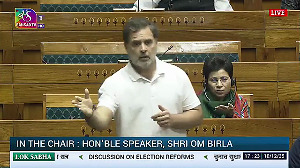At $100, a laptop is still beyond the reach of children in many poor nations, the United Nations has told a renowned computer scientist, who is behind the highly ambitious 'one laptop per child' scheme.
"Even if the cost was only $100 per child, that is more than most developing countries, especially the least developed countries, can afford," UN Under Secretary-General Cheikh Sidi Diarra said.
"In many LDCs, for example, the amount spent on a child's education in primary school is as low as USD five a year when teachers' salaries are excluded", he said on the display of a $100-laptop in the United Nations.
The 'One Laptop Per Child' project, which is the brainchild of Nicholas Negroponte, founder of Massachusetts Institute of Technology's Media Lab, was launched in 2005.
Diarra said it was important for Negroponte and his partners to understand any concerns the member-states
He also lauded the scheme's organisers for their efforts despite the skepticism the idea faced initially.
"While many challenges remained before the project's vision could be realised, it is clear it could make a major contribution to the socio-economic development of the world's poorest nations", Diarra said.
The laptop demonstrated here had a sunlight-readable display. It contained no moving parts, could be powered by solar, foot-pump or pull-string chargers and housed in a waterproof case.
Citing that some developing nations had not followed their verbal agreements with concrete orders, Negroponte has launched a "give one, get one" scheme allowing individuals to buy two laptops at a pre-determined price and have one of the laptops sent a child in the developing world.





